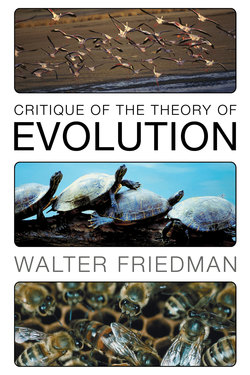Читать книгу Critique of the Theory of Evolution - Walter Friedman - Страница 20
На сайте Литреса книга снята с продажи.
14 : Hobbits
ОглавлениеRecently, the skeletons of “small people” or “hobbits” who stand only 90 cm (3 feet) tall were discovered on a remote Indonesian island; anthropologists believe that the hobbits and humans have a common ancestor.
The group of archeologists who discovered these small people were interviewed on 60 Minutes; they say that the first unearthed skeleton was that of a woman. It seems these evolutionists were using circular logic: these beings are humans → this skeleton more closely resembles the human female skeleton → this is a hobbit female → these beings are humans. When this type of logical deduction is used, the first step in the chain of inferences coincides with the last one. In reality, no one knows how to distinguish a female hobbit skeleton from a male one because not a single hobbit has been captured alive or dug out of a fresh grave.
Not a single physicist or chemist uses this type of logical deduction; only the evolutionists are stupid enough to put it to use.
Actually, the very existence of small people proves that the evolutionary theory is incorrect.
What kind of advantage could such small size possibly have? A little body requires a little amount of food—clearly, this is an important advantage. But this is the only advantage. Now, let’s take a look at the disadvantages.
1) Attacks by birds of prey. Often, predatory birds attack little children but almost never attack human adults because of their size. The hobbits were as small as human children, so they would have been in constant danger of being attacked.
2) Small people can’t hunt in places with tall grass because their vision is blocked by it.
3) Small people can’t cover large distances in search of food because their leg muscles are too weak to carry them for prolonged periods of time.
Clearly, the number of disadvantages is larger than the number of advantages. If the principle of natural selection is correctly applied, it proves that these small people are fiction.
Anthropologists are notorious for the bending and twisting of data to fit it into their wacky theories. One of them told 20/20 that the seven year itch is, in fact, a four year itch—it takes four years for an animal couple to raise cubs, and after that the partnership is kaput. Apparently, she had statistical data showing that the number of divorces peaks after four years of marriage, so, in her view, humans follow the same pattern as their animal cousins. There is a problem with this assessment, though—while it takes four years for certain animal species to raise offspring, a vast majority of animals stay with their progeny for only two years, so the whole theory of human-animal behavioral resemblance breaks down.
Some anthropologists decided to look for an explanation of certain characteristics of human behavior beyond the animal world because the animal socialization, in their words, is too primitive. Ants, for example, have a much more complex societal structure with the queen, workers, soldiers, nannies, etc., so these anthropologists stick their heads into anthills in an attempt to find extremely valuable data about human society.
For certain governments, the discovery of “human ancestors” became a matter of national prestige. They lavishly finance anthropological digs and hail their anthropologists as if they were national heroes. Ideally, all departments of anthropology would receive no support from the government; this measure would force the universities to transfer “old bones of human ancestors” to the departments of paleontology.
